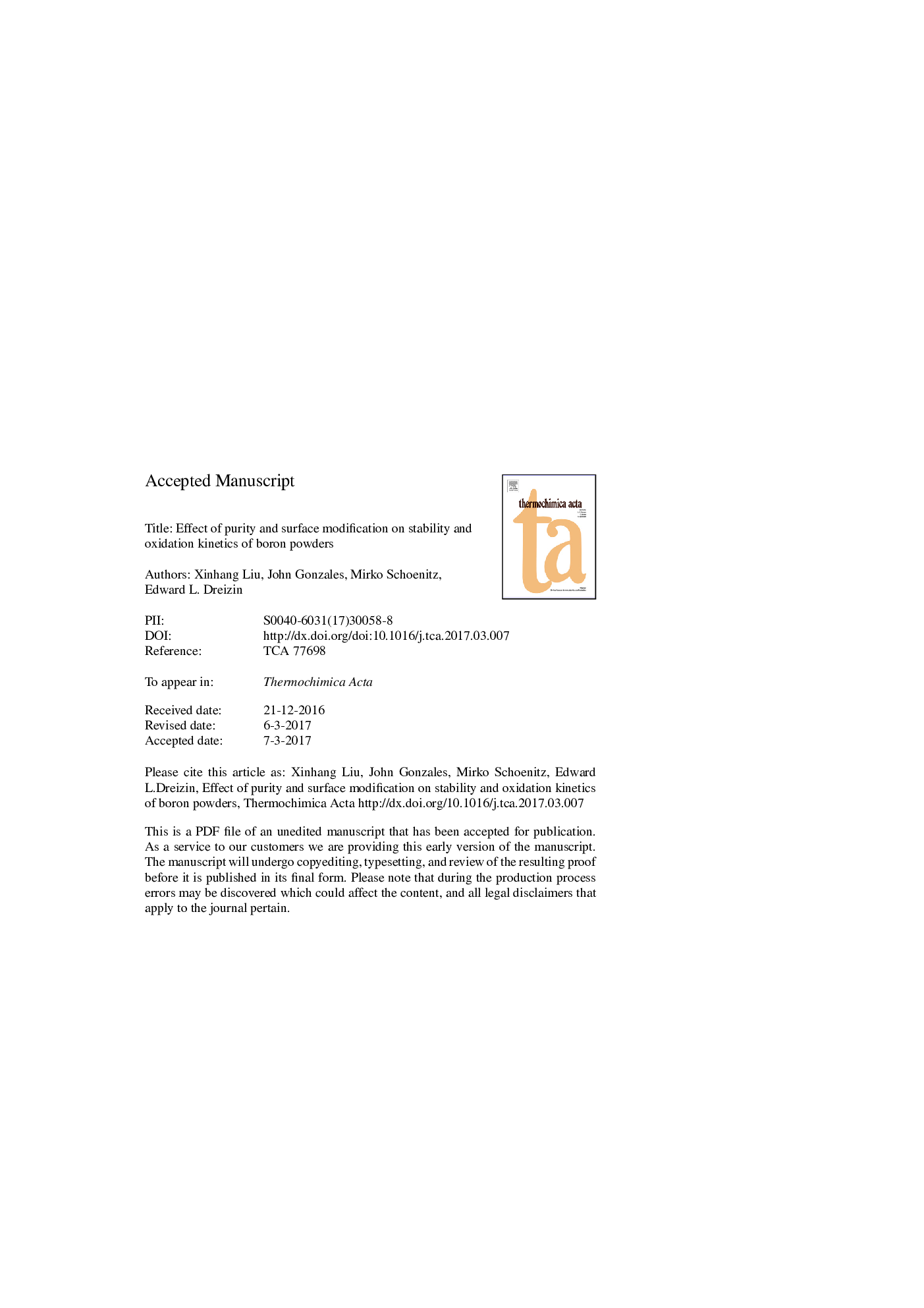| Article ID | Journal | Published Year | Pages | File Type |
|---|---|---|---|---|
| 4995915 | Thermochimica Acta | 2017 | 15 Pages |
Abstract
A commercial 95-% pure boron was ultrasonicated in acetonitrile and then in toluene to remove the surface layer of boron oxide and boric acid. The powder suspended in acetonitrile forms stratified layers, with the bottom layer containing most of the material with the least amount of boron oxide and boric acid. The surface of the processed boron powder was modified with a protective layer, making it more stable in room temperature humid oxidizing environment than the reference 95-% pure commercial boron. The stability of different powders was characterized using isothermal calorimetry employing a thermal activity monitor TAM III with a perfusion ampoule. Oxidation of the surface modified boron powders was studied using thermal gravimetry and compared to oxidation of both 99 and 95-% pure commercial powders. At room temperature, the 99-% pure boron powder was the most stable. Upon heating, the 99-% boron begins oxidizing at a lower temperature than all the 95-% pure powders. However, the apparent activation energy of oxidation at elevated temperatures obtained using a model-free isoconversional methodology for the 95-% pure powder processed in both acetonitrile and toluene is lowest among all tested powders and is close to 100Â kJ/mol. It is expected that the latter powder is the most attractive as a fuel, which will be characterized by the shortest ignition delays.
Related Topics
Physical Sciences and Engineering
Chemical Engineering
Fluid Flow and Transfer Processes
Authors
Xinhang Liu, John Gonzales, Mirko Schoenitz, Edward L. Dreizin,
